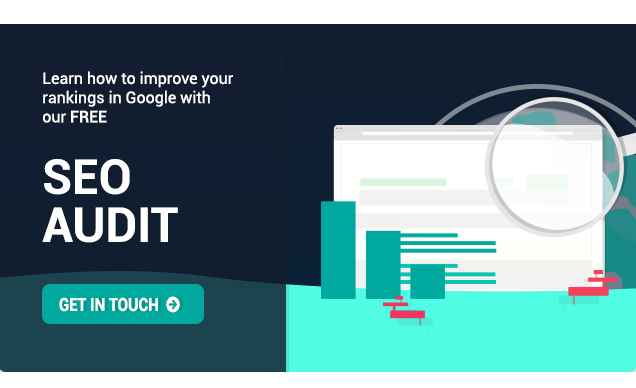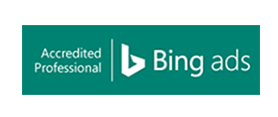Local SEO has evolved. 6 years ago, you could make huge strides without links. Domain authority did not matter as much as a relevant address and well-structured citations (1).
But things move on. Local SEO is now a game of many parts and, like traditional SEO, there are many local SEO ranking factors (2). Now, in 2022 and beyond, the key ranking factors as voted by experienced SEO agencies (including Bowler Hat) are as follows:
- Google My Business signals
- Link signals
- Review signals
So, building 100 citations is not going to help you rank in local search. In fact, that more-more-more mentality that often pops up in SEO can do more harm than good. We recently helped a hotel with thousands of citations and by stripping them back to just the essentials we got far better results.
To rank well in the local map pack and the localised organic results you have to focus on the local SEO tactics that are important today.
To help guide you forward in your local SEO endeavours, here we detail 7 key tips to help you dial in your local SEO and get your local business ranking at the top of the map pack and organic results.
Contents
- Have an address in the target location
- Get listed on Google Business Profile
- Conduct sensible on-page optimisation
- Create, clean up, and optimise citations
- Improve on-page optimisation
- Get more positive reviews
- Build domain authority
- Optimise for page speed, page experience, and core web vitals
Free Local SEO Audit – confused, time-challenged or overwhelmed? Drop us a line and we will conduct a free local SEO audit and show you exactly what you need to do to improve your local search rankings and generate more business from Google.
#1 – Have an address in the target location
It might sound silly, but make sure you have an address in the location you want to target. I often get asked how to rank in the local pack for a location that the business doesn’t exist in and the simple answer is you can’t. You still have the opportunity to rank in the localised organic results, but you won’t rank in the local map pack.
If you want to rank for a given location in the hyper-localised map pack then you need an address there.
#2: Get listed On Google Business Profile
Google Business Profile (aka Google My Business aka GMB) is where you can tell Google, and the world, about your business. GMB is also a key ranking factor and is super easy to optimise. Just get your page created (if one does not already exist) and get it verified. Once verified, you then want to fill the page out with as much information as possible. Simply head to the ‘Info’ tab in the GMB dashboard and fill out all of the fields.
Really try to think what your prospective customers would like to see here: photos, business information, and posts are key to making your profile engaging for your prospective customers. The platform also supports messaging, reviews, and Q&As so be aware that this is part of your digital shop window and the more useful information you add here the better.
And don’t forget to keep this information fresh and up-to-date – if your business hours change then update them so your customers know!
#3: Conduct sensible on-page optimisation
Google wants to understand your business and where you operate. So, make sure you help clearly illustrate that across all the major on-page elements.
- Include locations in your page titles
- Include locations in your meta descriptions
- Include locations or areas covered in your page copy
- Create location pages if you cover multiple locations
Google is just a machine, and even in 2022, machines are still pretty stupid. So, make sure you spell it out. No need for this to be spammy but make sure you clearly illustrate the locations you cover.
#4: Create, clean up, and optimise citations
Citation optimisation is an area that has seen big changes over the last few years. Historically, citation optimisation alone could generate big results. As is typical with SEO, there was often a “more is better” mentality which is certainly not the case – too many citations can make management difficult and consistency problematic.
Step 1 – Audit any existing citations out on the web to make sure they are correct. NAP (name, address & phone number) is super important to keep consistent for local SEO. If there are still citations out on the web that have your old address etc, Google can easily get confused and will impact the confidence it has in your business. So the first step is to get all the existing listings accurate.
Step 2 – The next stage is to create listings in any relevant business or location directories (if they don’t exist already). Again, make sure you keep all information consistent and optimise the listings as best as possible by including things like images, opening hours, business descriptions, etc. These differ based on location and industry but any directories or portals that rank on the first page of Google for your keywords are a good starting point.
Again, it is worth considering that Google is just a machine and you should really spell out what you do and where you do it. By writing in a clear, concise, and consistent way on your website, on your Google Business Profile, and on your citations, you help send a clear signal. This helps build trust as everything lines up across these three touch points – a bit like triangulation.
#5: Improve your on-page optimisation
With local SEO, we can rank in the map pack results typically directly below the ads and in the organic results generally below the map results. In an ideal world, we want a listing in both of these locations. Throw a search advert into the mix and you can be on the first page three times to maximise exposure!
Key factors here are to optimise your page titles, meta descriptions, and body copy – these are the basics but this is what gets results in local SEO (and is all too often overlooked).
The template that I always stick by for on-page optimisation is:
Service in Location – Brand Name
So if you are a plumber called ‘Easy Pipes’ in Croydon, one of your page titles would look like this:
Plumber in Croydon – Easy Pipes
Now it’s not to say that this is perfect, but I can almost guarantee that it is better than the automated title that was created originally. So get started with the page titles and then gradually work your way through the meta descriptions too. Meta descriptions won’t have a direct impact on the rankings but can help click-through rates which, in turn, can influence rankings.
If you would like to learn more about page titles and best practices, you can check out our in-depth guide – https://www.bowlerhat.co.uk/optimise-page-titles/.
#6: Get more positive reviews
Just like meta descriptions, getting more reviews won’t help you rank higher. But they do play an important role when people are comparing your business to your competitors. The key here is to take it slow and steady. According to Bright Local’s recent study (4), 40% of consumers only take into account reviews written within the past 2 weeks.
So, instead of getting a glut in a few days that will no longer be useful in a few months’ time, aim to get one or two good reviews a month. You will gradually start to build a solid portfolio of reviews and it will illustrate to viewers that you have consistently provided a good service.
Focus on getting reviews everywhere that matters – Google, Facebook, directory sites like Yell, portal sites like checkatrade.com – any sites that rank for your keywords. Support reviews are also important and an opportunity for you to show that you are the right people for the job.
#7: Start building your domain authority
As local SEO has matured and become more competitive, domain authority (DA) has become ever more important for businesses in a competitive industry or location. You can do everything else right by getting your citations, GMB, and on-page optimisation all 100% on point, yet to get into the top 3 in competitive industries and locations you have to build some authority.
To do this you have to engage in link and authority building. Typically, the approach here would involve ensuring you have links from any and all relevant sites, portals, and directories. Relevant being the keyword here – if that portal ranks for your search terms it likely has value. If it is a backstreet site that no one ever sees, then maybe not so much. Think about whether this is a link that Google would trust. Is this a link I would show to my mom? (if she was a white-hat SEO of course).
This is a slow and steady process but is well worth the results. You really have to focus on getting the right links, though. This is not a numbers game. Ensure you connect what should be connected and stay away from buying links.
Here is a guide from our very own Marcus Miller on how small businesses can earn links: https://searchengineland.com/organic-traffic-link-building-small-businesses-269353 (2)
#8: Review your page speed and mobile responsiveness
People like fast sites. Google likes fast sites. Ensuring your site loads quickly and is easy to use and understand on a mobile device is important for SEO. But, it is even more important for your customers – if your site takes too long to load or does not work well on mobile, users will simply bounce away and go elsewhere. You have done all the hard work, got someone to your site, and at the final hurdle, they leave, all because of one simple issue.
So it’s as simple as that. Use these SEO page speed tools to check your website speed and follow the tips to improve it. Make sure your website is responsive for mobile and tablet, and that it actually functions well (lets you fill out an enquiry form etc).
A note on triangulation in local SEO
A helpful way to think about local SEO is like triangulation in research. How trustworthy information is from one source rises when the same facts come together from multiple sources. With local SEO, you want Google to be able to triangulate between your website, your Google Business Profile, and then the myriad external reference points, often known as citations, but really, think of anywhere your business is listed (social profiles, etc) and ensure you perform some sensible, location-focused optimisation.
Take your local SEO to the next level
Follow the guidance in these local SEO tips and you will see your site rise up the search engine results pages (SERPs). As ever, if you have any questions or are struggling to get your site to rise up then drop a comment below or get in touch and we will see how we can help.
If you have worked through these and want to keep pushing forward then check out our small business SEO tips, how to safely buy affordable, effective SEO, and our buyer’s guide to SEO packages – both of these guides exist to ensure you climb the rankings ladder whilst avoiding the SEO snakes!
Free audit and personalised SEO plan
SEO can have many moving parts and knowing exactly what to do is half of the battle. To help with this, we will gladly audit your site and provide a personalised SEO plan for your business. Get in touch to request your SEO plan or read more here.
References
- Citation Optimisation:
https://www.bowlerhat.co.uk/noise-trust-nap-consistency/
- Moz – Local SEO Ranking Factors:
https://moz.com/local-search-ranking-factors
- Link Building for Small Businesses:
https://searchengineland.com/organic-traffic-link-building-small-businesses-269353
- Bright Local – Local Consumer Review Survey:
https://www.brightlocal.com/learn/local-consumer-review-survey/







